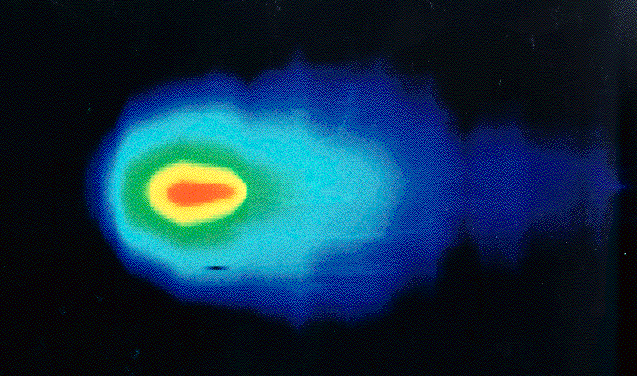
Comet IRAS-Araki-Alcock
Encyclopedia

Comet
A comet is an icy small Solar System body that, when close enough to the Sun, displays a visible coma and sometimes also a tail. These phenomena are both due to the effects of solar radiation and the solar wind upon the nucleus of the comet...
that, in 1983, made the closest approach to the earth (about 5,000,000 km) of any comet in 200 years; only Lexell's Comet
Lexell's Comet
D/1770 L1, popularly known as Lexell's Comet after its orbit computer Anders Johan Lexell, was a comet discovered by astronomer Charles Messier in June 1770. It is notable for having passed closer to the Earth than any other comet in recorded history, approaching to a distance of only...
, in 1770, and 55P/Tempel-Tuttle
55P/Tempel-Tuttle
55P/Tempel–Tuttle is a comet that was independently discovered by Ernst Tempel on December 19, 1865 and by Horace Parnell Tuttle on January 6, 1866.It is the parent body of the Leonid meteor shower...
, in 1366, are thought to have come closer.
The comet was named after its discoverers – the Infrared Astronomical Satellite and two amateur astronomers, the highly-respected George Alcock
George Alcock
George Eric Deacon Alcock was an English astronomer. He was one of the most successful visual discoverers of novae and comets....
of the United Kingdom
United Kingdom
The United Kingdom of Great Britain and Northern IrelandIn the United Kingdom and Dependencies, other languages have been officially recognised as legitimate autochthonous languages under the European Charter for Regional or Minority Languages...
and Genichi Araki of Japan
Japan
Japan is an island nation in East Asia. Located in the Pacific Ocean, it lies to the east of the Sea of Japan, China, North Korea, South Korea and Russia, stretching from the Sea of Okhotsk in the north to the East China Sea and Taiwan in the south...
(both men were schoolteachers by profession, although Alcock was retired). Alcock had made his discovery simply by observing through the window of his home, using binoculars
Binoculars
Binoculars, field glasses or binocular telescopes are a pair of identical or mirror-symmetrical telescopes mounted side-by-side and aligned to point accurately in the same direction, allowing the viewer to use both eyes when viewing distant objects...
.
During the closest approach the comet appeared as a circular cloud about the size of the full moon, having no discernible tail, and shining at a naked eye magnitude
Apparent magnitude
The apparent magnitude of a celestial body is a measure of its brightness as seen by an observer on Earth, adjusted to the value it would have in the absence of the atmosphere...
of 3-4. It swept across the sky at an incredible speed of some 30 degrees per day.
It is a long-period comet, with an orbital period of around 964 years, and is the parent comet of the minor Eta Lyrid meteor shower
Meteor shower
A meteor shower is a celestial event in which a number of meteors are observed to radiate from one point in the night sky. These meteors are caused by streams of cosmic debris called meteoroids entering Earth's atmosphere at extremely high speeds on parallel trajectories. Most meteors are smaller...
. This shower's radiant
Radiant (meteor shower)
The radiant or apparent radiant of a meteor shower is the point in the sky, from which meteors appear to originate. The Perseids, for example, are meteors which appear to come from a point within the constellation of Perseus....
lies between Vega and Cygnus
Cygnus (constellation)
Cygnus is a northern constellation lying on the plane of the Milky Way. Its name is the Latinized Hellenic word for swan. One of the most recognizable constellations of the northern summer and autumn, it features a prominent asterism known as the Northern Cross...
and produces 1 or 2 meteors an hour in mid-May with a peak between May 9 and May 11.

